Email marketing is still a powerful tool if you know how to use it right. But between social media notifications and never-ending news updates, it is hard to grab someone’s attention, let alone get them to act on your emails. So how do you write emails that connect with people and get them to say “yes”?
It is simple: stick to email marketing best practices.
Intrigued? We thought so. In this article, we will discuss 20 email marketing strategies that get results. We are talking about emails that people actually want to open, read, and – most importantly – take action on.
20 Email Marketing Best Practices For Better Engagement & Conversions
Each strategy comes with sub-steps, make sure you fully understand how to execute it to get the ideal results.
1. Build Your Email List With Permission (Double Opt-In)
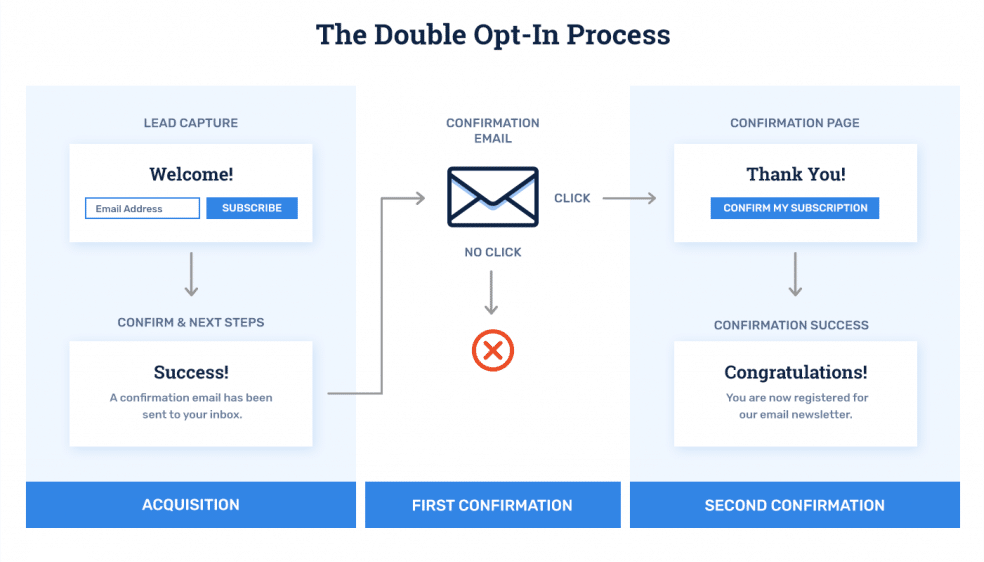
Double opt-in might sound obvious but you need it for a successful email marketing strategy. You want engaged subscribers, not a random list of email addresses.
Here’s how it works:
When someone signs up for your list, they will receive a confirmation email. This email asks them to verify their subscription by clicking a link. This extra step ensures they actually want your emails and minimizes fake or inactive addresses.
The benefits of double opt-in:
- In some regions, like the European Union with GDPR, double opt-in is required by law.
- People who confirm their subscription are more likely to open and click through your email campaign.
- Fewer inactive addresses mean fewer bounces which helps keep your sender reputation healthy.
2. Send A Welcome Email To New Subscribers
A welcome email is an ideal opportunity to make a great first impression to turn them into loyal fans who open and engage with your email marketing campaigns. Here’s what to include:
- A warm personalized media greeting and thank them for subscribing.
- Highlight your best content or special offers.
- Include clear and easy ways to contact you or update their preferences.
- Briefly explain what kind of emails they can expect from you (e.g., weekly newsletters, exclusive discounts).
3. Avoid Using A No-Reply Email Address
How welcoming does a “no-reply” address feel? Not very.
It creates a one-way street of communication which isn’t ideal for building relationships. Subscribers might have questions or want to learn more. Having a reply-to address opens a channel for conversation.
Also, some email providers can flag no-reply email addresses as spam. A real address helps ensure your email campaigns reach inboxes. Dedicate a specific email address for marketing inquiries. This keeps things organized and lets you track and respond to subscriber messages.
4. Incorporate Multimedia Elements
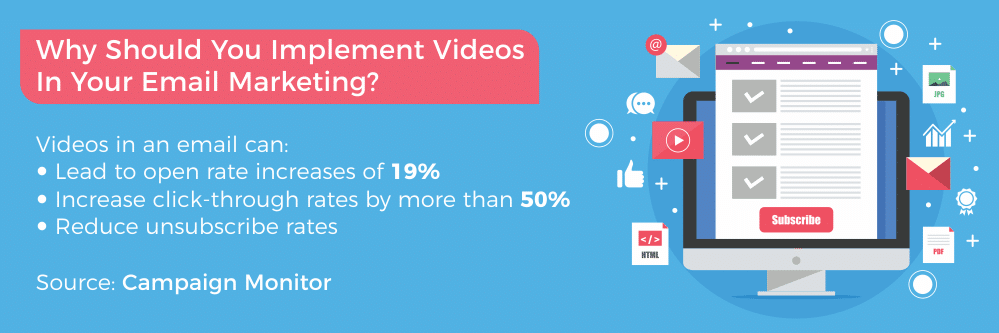
Visuals break up text and make your marketing email more visually interesting. People are more likely to scan an email with images than a plain text one. In fact, adding videos to your emails can increase the click-through rate by over 50%.
Here are ideas for using multimedia:
- Images: Showcase your products, use lifestyle photos to tell a story, or include infographics to present data.
- GIFs: Add a touch of fun and personality to highlight specific features or showcase a product in action.
- Short videos: Perfect for quick demos, customer testimonials, or behind-the-scenes glimpses into your brand.
For industries that deal with complex or abstract products or services, like financial planning or legal services, impactful visuals are harder to develop. Text-based content with clear explanations can clarify better and is more relatable.
Similarly, for some niches, like research or education, multimedia elements can enhance engagement but the core value proposition still lies in the written content. But a business like this cloud-based communication platform for sales and support teams can benefit from using multimedia elements in its email marketing strategy.

Sales and support functionalities aren’t very exciting but this business can use screenshots, infographics, and short explainer videos to showcase its user interface, features, and benefits clearly and engagingly.
The company can also use images and videos of happy customer testimonials or case studies to show its achievements. It is very helpful since the sales and support industry relies on building trust with potential customers. Plus, they can use short GIFs to show specific features of the platform, like screen-sharing capabilities or a quick demo of call routing.
While static images and videos are great for grabbing attention, Hyperise lets you personalize these multimedia elements for even more impactful email campaigns. You can add dynamic elements like greetings and CTAs directly within your existing images and videos.
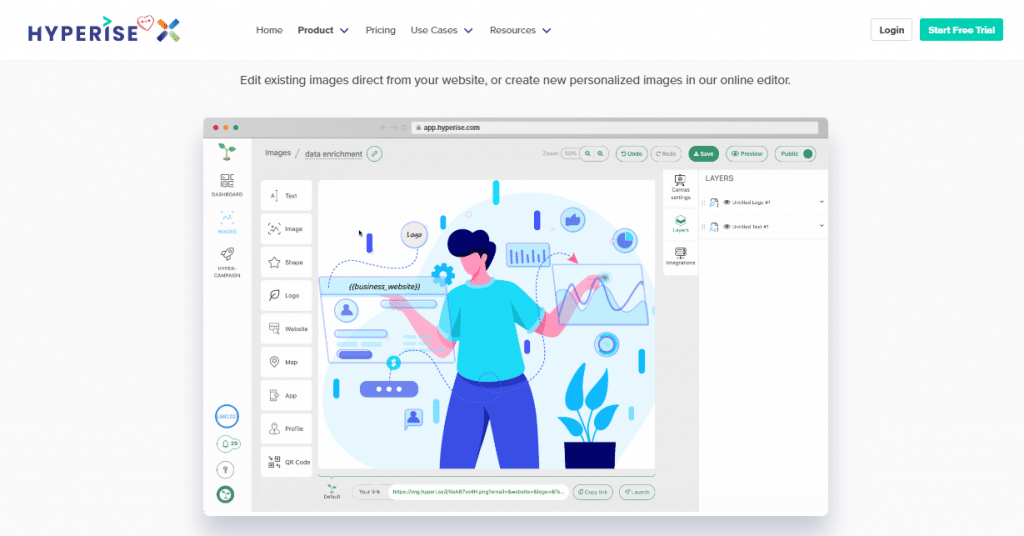
This creates a more engaging experience for your audience and increases click-through rates. Hyperise integrates with many email marketing platforms, making it easy to incorporate this level of personalization at scale.
5. Personalize Your Emails
People respond better to messages that feel relevant to them. Personalizing email subject lines, content, and offers shows you care and helps your emails stand out. It doesn’t have to be complicated. Start small and you will see a difference. Here’s how to personalize your emails:
- Group subscribers with similar interests and tailor your content accordingly.
- A special offer or discount on birthdays or anniversaries can boost loyalty and engagement. You can use Hyperise’s interactive features to add elements to images and make the rewards more visual and personal.
- Use subscriber names in the subject line and email opening. Addressing someone by name instantly grabs their attention.
- Recommend products based on past purchases. If someone bought a running shoe, suggest complementary socks or apparel in your next email.
6. Write In An Appropriate Tone
The way you write your emails should reflect your brand and resonate with your target audience. Finding the right tone takes practice but it is worth it. Here are 4 strategies you can do:
- Consider your niche: Are you selling high-end jewelry or funny pet costumes? The tone should match the product.
- Remember your brand personality: Are you professional and serious? Fun and quirky? Let your brand shine through in your writing style.
- Center around your campaign goals: Are you promoting a sale? Educating about a new product? Adjust your tone to fit the purpose of the email.
- Know your audience: Are they young and trendy, or professional and established? Millennials respond better to a casual and playful tone while business professionals prefer a more formal approach.
Some niches naturally lean to a specific tone. For instance, this wholesale distributor of chemicals and ingredients deals with B2B communication. So they would adopt a professional and informative tone.
They can’t just say:
“Hey there! We’ve got some awesome bulk ascorbic acid for you. Let’s chat about sustainable sourcing!”.
The better approach for their niche would be:
“Our wholesale distributorship offers high-quality bulk ascorbic acid with a focus on sustainable sourcing. Reach out for more information.”
Their emails would focus on reliability, product quality, and technical specifications. Humor or informality wouldn’t be appropriate when discussing bulk ascorbic acid or the importance of sustainable sourcing practices.
On the other hand, this online skills-learning platform targets individuals – tech professionals, career changers, and those looking to advance in tech roles. Its tone could be informative and sometimes motivational. The business can rely on a more casual and approachable style and use success stories or community aspects to connect with learners.
However, even within similar niches, you should understand your brand personality and target audience. A playful tone might work for a children’s clothing brand while a more sophisticated tone connects better with parents making the purchase.
7. Keep Your Emails Concise & To The Point
People are busy, get straight to the point. If you have more to share, link to a relevant blog post or landing page where subscribers can find information. Here’s how to keep your emails concise:
- Don’t try to cram too much information into one email. It is best to keep it under 200 words.
- Tell subscribers what you want them to do early on in the email.
- Use bullet points and short paragraphs to break up text and make it easy to scan.
- Each email should have a clear purpose, whether it is promoting a sale, sharing valuable content, or reminding someone about an abandoned cart.
8. Use Preheaders To Give Subscribers A Preview Of Your Email Content
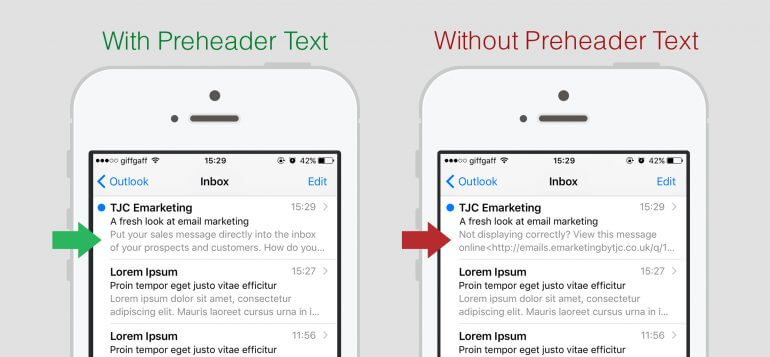
The preheader is that short snippet of text displayed next to the subject line in some email clients. Here’s how to use preheaders effectively:
- Create a sense of urgency. Encourage them to open the email and learn more.
- Summarize your email’s main benefit. Briefly hint at what subscribers can expect inside.
- Keep it short, around 50 characters or less, and avoid using all caps or spammy language.
- The preheader and subject line should work together to create a clear and concise message.
This strategy may not be as crucial for all niches. For example, an impulse purchase like clothing will not benefit as much from preheaders with detailed information. A subject line and image that grabs attention is more suitable.
However, for niches like this online solar generator kits retailer, preheaders become a valuable tool to grab subscriber interest. Their target audience is environmentally conscious with high-consideration purchases. They research and compare options before making a purchase.
Preheaders can be used to address common concerns or show special financing options. Similarly, the business can use preheaders to compare products or highlight the environmental benefits of switching to solar power to encourage recipients to open the email and learn more.
9. Use White Space To Make Your Emails Easy To Skim
White space isn’t wasted space. It creates a clean and organized look and makes your emails more inviting to read. This can increase engagement and click-through rates. Here’s how to use white space effectively:
- Leave ample room around your call to action button.
- Pad your email with margins. Don’t cram content to the edges.
- Leave space between paragraphs. This improves readability and prevents your email from feeling cluttered.
- Use clear spacing around headlines, subheadings, and bullet points. This creates a clear hierarchy and makes it easy for subscribers to find the information.
10. Craft Clear & Compelling Subject Lines
Subject lines are email marketers’ best bet. It is your email’s first impression so make them informative and enticing. Here are ways to write strong subject lines:
- Skip excessive punctuation and ALL CAPS.
- Aim for under 50 characters to avoid getting cut off in inboxes.
- Create a sense of urgency or curiosity to encourage them to open the email.
- Highlight the email’s benefit and give a preview of what is in it for the subscriber.
- Use strong verbs and avoid spammy words. Words like “free” or “urgent” can trigger spam filters.
11. Include A Strong Call To Action (CTA)
Your call to action (CTA) is what tells subscribers what you want them to do after reading your email. It could be anything from visiting your website to making a purchase or downloading a freebie. Here’s how to write a strong CTA:
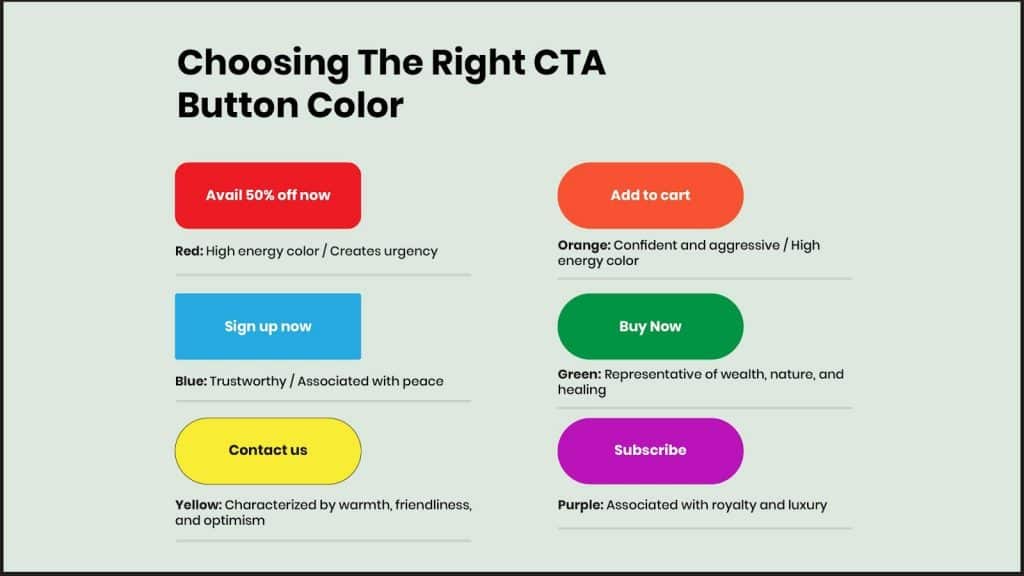
- Use contrasting colors and clear text to make your CTA button stand out.
- Use clear and action-oriented language. “Shop Now,” “Learn More,” or “Download Your Free Guide” are all easy to understand.
- Put your CTA at the end of your email or after your main message. It is best to add secondary CTAs throughout the content for emphasis.
12. A/B Test Different Email Elements
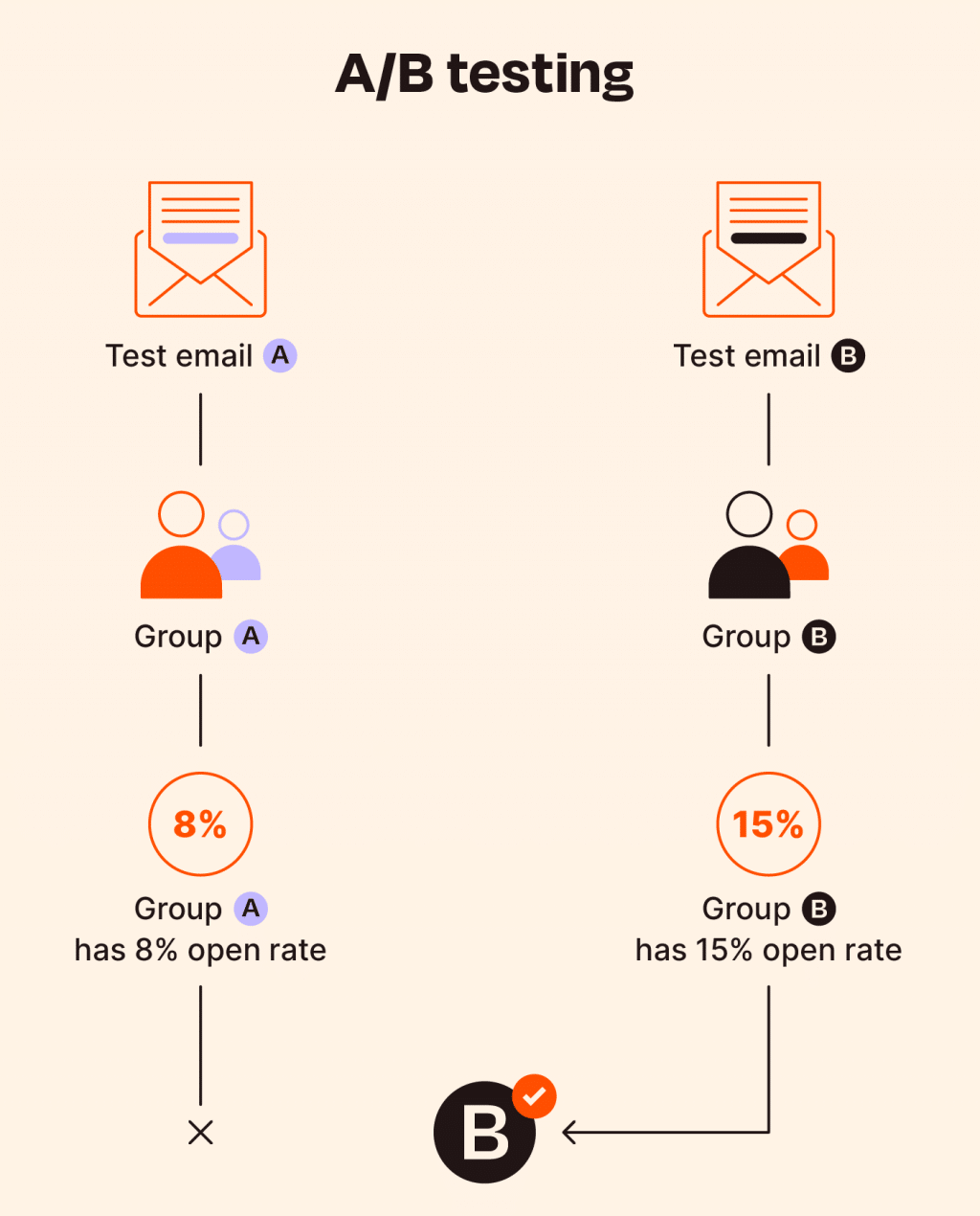
The best way to know what works for your audience is to test it. A/B testing lets you compare different versions of your emails and see which ones perform better. Here’s how A/B testing works:
- Choose an element to test. This could be your subject line, CTA wording, button color, or even the overall email design. DON’T TEST 2 ELEMENTS AT ONCE.
- Use Hyperise to dynamically add recipient names, company logos, or location-specific greetings in your emails and see if personalization improves engagement.
- Create 2 versions. One with the original element and one with the variation you want to test.
- Send both versions to a small segment of your list. Then track which version gets more opens, clicks, or conversions.
- Once you know which version performs better, you can send it to the rest of your list for future campaigns.
Many email marketing software platforms offer built-in A/B testing tools. Use them to simplify the process.
13. Segment Your Email List
Sending one generic email to everyone is a missed opportunity. Segmentation lets you target specific groups with relevant content. The more targeted your emails are, the more likely they are to be opened, clicked on, and acted on. Here’s how to segment your list:
- You can also segment based on how subscribers interact with your brand. Lead generation tools, like those highlighted in this resource, can automate this process by gathering data from website visits, downloads, and other interactions.
- Create segments based on interests. Use signup forms or surveys to learn about subscriber preferences.
- Identify subscriber characteristics. Consider demographics like age, location, interests, or purchase history.
- Send targeted emails to each segment. They should cater to their specific needs and interests.
Segmentation for many businesses is simply separating customers based on interests or purchase history. However, there are some industries where you have to market the same product to entirely different audiences. For instance, this business selling medical alert systems would target 2 distinct groups:
- Elderly Individuals: Emails to this audience would focus on the independence and security the system provides. The business would highlight features like fall detection and emergency response.
- Caregivers: Emails aimed at caregivers would emphasize the peace of mind a medical alert system brings. They will showcase features like remote monitoring and medication reminders.
So it is best to segment your email list by who you are talking to, not just who buys. Tailor messages to their unique needs for better results.
14. Make Sure Your Emails Are Mobile-Friendly
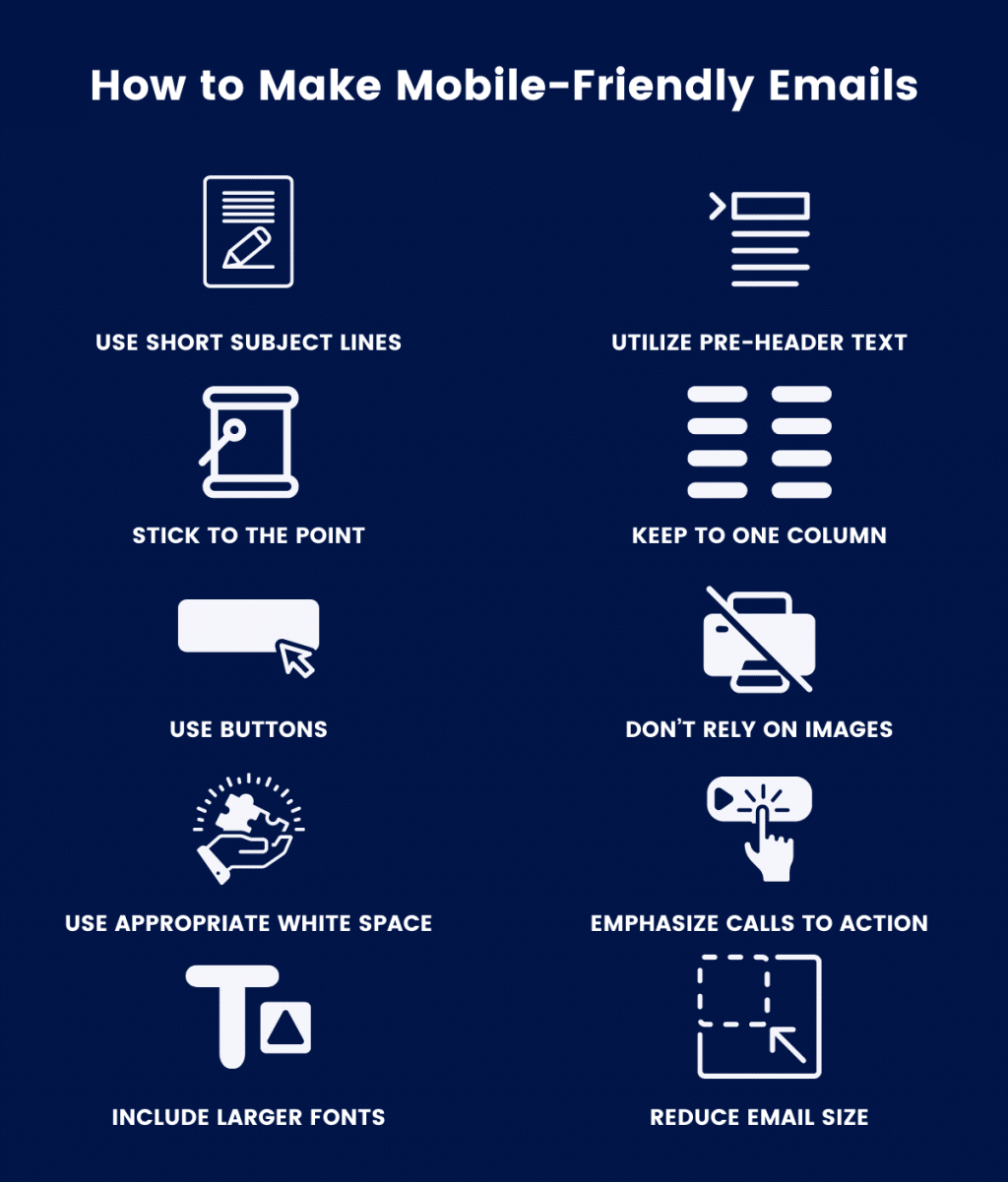
More and more people are checking their email on mobile devices. If your emails aren’t mobile-friendly, you are alienating a big chunk of your audience. Here’s how to ensure mobile-friendliness:
- Use a responsive design so your email automatically adjusts to different screen sizes.
- Avoid complex designs that might not display well on mobile devices.
- Use large fonts and buttons. Make it easy for subscribers to read and interact with your email on the go.
- Before sending, test how your email looks and functions on different smartphones and tablets.
15. Send Emails At The Right Time & With The Right Frequency
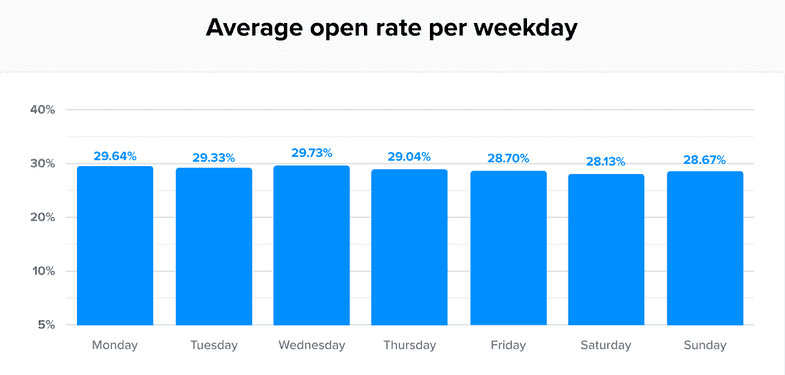
Studies show that open rates are higher on weekdays. Avoid weekends when people are less likely to be checking work emails. There is also a sweet spot when it comes to the time of day. Research suggests that emails sent in the morning or early afternoon get the most attention.
That said, the best time and frequency for your emails depend on your audience and industry. Here’s how to hit the bullseye:
- Don’t be afraid to try different times and see what gets the most opens.
- Start with what you think might work and track your results. Use email marketing tools like Constant Contact or HubSpot that provide analytics to see how your emails perform at different times and on different days.
- Different people check their email at different times. Are you targeting working professionals? Early mornings or evenings might work best. Marketing to students? Weekends or evenings could be golden.
16. Use Analytics To Track Your Email Marketing Performance
Data is your friend in email marketing. Use analytics tools to track your performance and identify areas for improvement. But with so many tools available, picking the right one is easier said than done. Not all tools are perfect for every business.
The key is to find the tools that work best for you. Exploring this list of eCommerce tools can be a great starting point where they compare and review different solutions. This way, you can find the ones that best suit your requirements and help you take your email marketing to the next level.
Here’s what you can track with these tools:
Metric | Purpose | How it Helps |
|---|---|---|
Open Rates | Measure email engagement | Helps refine subject lines and CTAs |
Unsubscribe Rates | Indicate subscriber disinterest | Indicates if subject lines or content are not resonating with the audience |
Click-through Rates | Measure email click engagement | Helps optimize email content and design, indicating which links are most appealing to your audience |
Conversion Rates | Measure email effectiveness in driving actions | Indicates how well your email content and design are persuading subscribers to take action, helping improve email content, design, and sending schedule |
17. Include Social Sharing Buttons In Your Emails
Make it easy for subscribers to share your content with their network. Social sharing buttons are a simple way to increase reach and engagement. Here’s how to use social sharing buttons effectively:
- Choose the most relevant social platforms your target audience uses most.
- Make the buttons easy to find. Place them strategically in your email, like near the top or bottom.
- Use clear and recognizable icons. Subscribers should instantly understand what each button does.
This strategy works great if your email marketing is all about getting your brand noticed, as explained in this guide on building brand presence. When subscribers share your emails on social media, they expose your brand to a whole new network of potential customers.
This expands your reach and introduces your brand to people who might not have heard of you before. The more your brand is shared and seen across social media platforms, the more familiar people become with it. This repetition builds brand recognition and makes your brand more memorable in the long run.
18. Regularly Clean Your Email List To Remove Inactive Subscribers
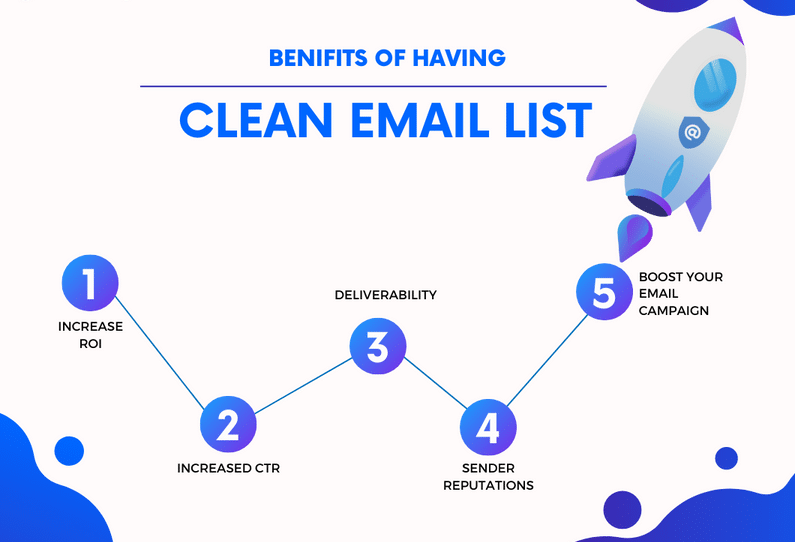
An unhealthy email list can hurt your deliverability rates. Fewer inactive addresses mean fewer bounces, which keeps your sender reputation healthy. Plus, some email marketing services charge based on list size. Removing inactive subscribers helps you maximize your resources.
Here are ways to do it:
- Send a win-back campaign to inactive subscribers offering an incentive to re-engage.
- Use list hygiene tools to identify and remove inactive subscribers. One every 6 months is a good starting point.
- Include an unsubscribe option in every email. Make it easy for people who truly aren’t interested to unsubscribe.
- Set your email marketing software to automatically remove subscribers who haven’t opened your emails in a certain amount of time.
Now this strategy is less universally applicable in all niches. Companies selling everyday products or services (clothing, groceries) can expect more frequent customer purchases. Inactive subscribers in these cases might just be waiting for the next sale or promotion.
But for a specialized niche like this marketplace that lists businesses for sale, cleaning the email list becomes all the more important. Their target audience consists of individuals who are either actively looking to buy or sell a business, which is a relatively infrequent occurrence for most people.
Plus, businesses are not something people buy and sell frequently. This means many of their customers in the email list will inevitably become inactive over time as people move on from their initial interest in buying or selling. Since their audience has a specific goal, it is easier to identify inactive subscribers.
19. Add interactive content to emails
Interactive content encourages clicks and increases the time subscribers spend with your emails which in turn increases engagement and conversions. But keep interactivity balanced. Too many elements will overwhelm subscribers. Here’s a useful guide on creating interactive emails to help you follow best practices and keep things in check.
Let’s see how you can do it:
- Countdown timers: Create urgency and excitement for upcoming sales, promotions, or product launches.
- Polls and surveys: Get feedback directly from subscribers with quick polls or surveys embedded in your emails.
- Accordions and dropdowns: Let subscribers reveal information at their own pace by using expandable sections.
- Clickable product carousels: Show multiple products in a single email with a carousel that users can swipe through.
20. Showcase customer testimonials & reviews
Customer testimonials and reviews show potential customers that others trust your brand. This can be a powerful nudge towards making a purchase or signing up for your service. Here’s how to use them:
- Showcase star ratings and reviews from trusted review platforms to make them more authentic.
- A headshot and name next to a quote personalizes the testimonial and makes it more relatable.
- Feature quotes from real customers. Highlight positive experiences and the value your product or service provides.
Conclusion
The email marketing best practices we discussed are meant to grab attention and turn curious clickers into loyal customers. Why? Because they put your audience first. With these strategies, it is a win-win. Your customers get the information they want and you achieve your marketing goals. So embrace them and watch your conversions soar.
But there is always room to take it a step further. With Hyperise, you can generate personalized versions of the image or video for a large number of recipients. It lets you supercharge your email marketing efforts and forge even deeper connections with your audience. Try Hyperise for free and see the difference a touch of customization can make.
Author Bio:
Burkhard Berger is the founder of Novum™. He helps innovative B2B companies implement modern SEO strategies to scale their organic traffic to 1,000,000+ visitors per month. Curious about what your true traffic potential is?
- Author picture: Here
- Gravatar: vip@novumhq.com
Last Updated on May 22, 2024